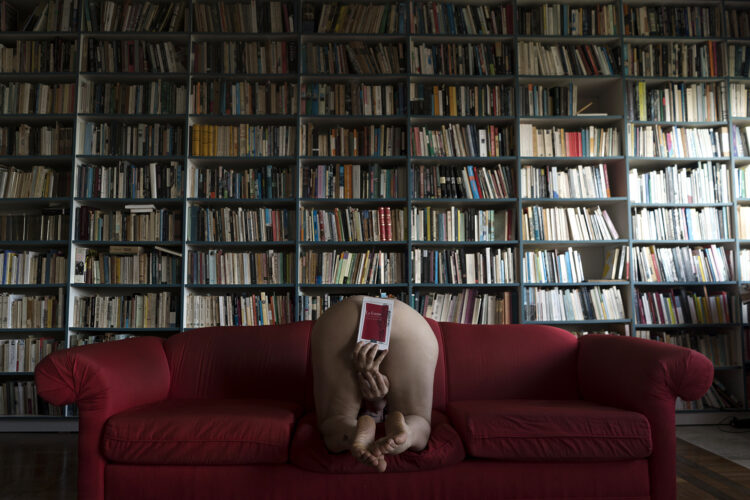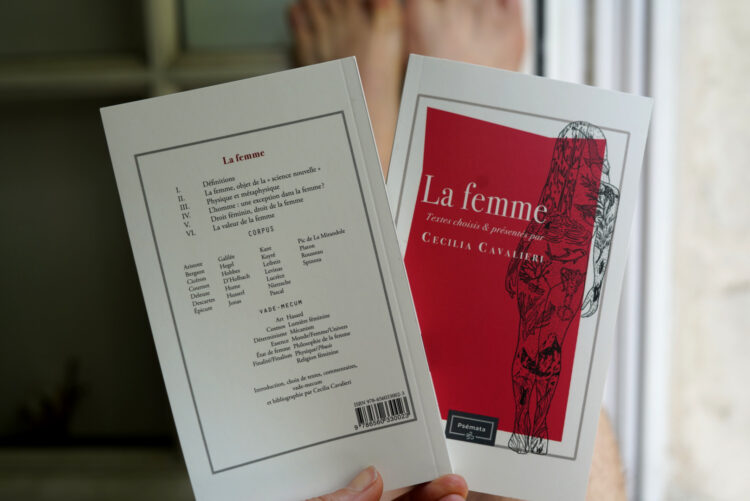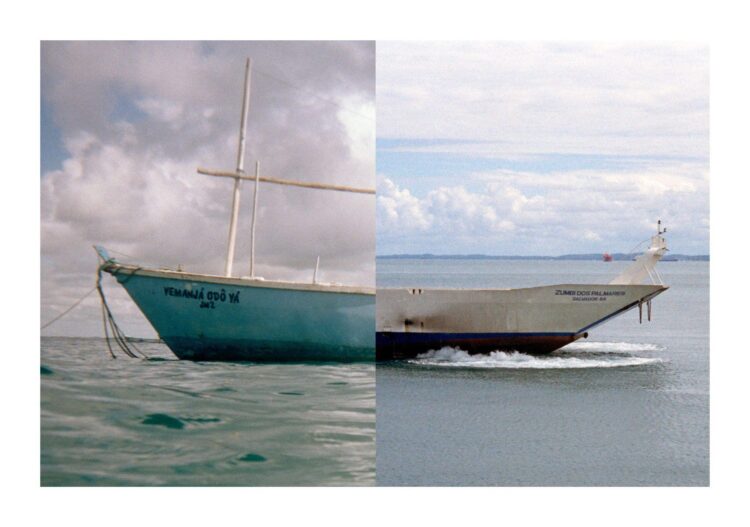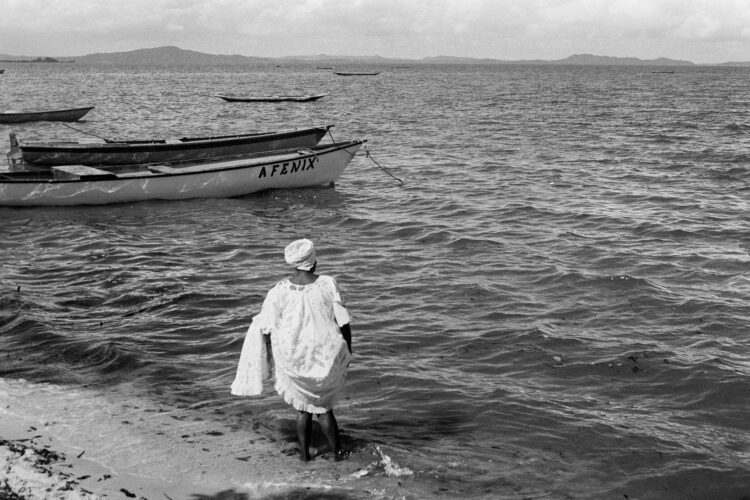Narrative-women: the intersection between visual arts and literature in contemporary artistic practices from Brazil
Author: Prof. Dr. Michelle Farias Sommer
This blog post focuses on part of my post-doctoral research ongoing at the Post-graduate Program in Literature at the Federal University of Rio de Janeiro under the supervision of Prof. Dr. João Camillo Penna. This research adheres to the efforts for the affirmation and visibility of knowledge of artistic practices carried out by women from Latin America towards the equal inscription of historiographies, theories and criticisms associated with the visual arts. and literature under construction in the 21st century. In the visualities involved with narrative perspectives, in the incorporation of orality and/or textuality, artistic practices are expanding: in works that tell stories, new theoretical associations between visual and literary languages are produced. Considering that the exponents of this production are the exhibition and/or publication of recent works through a diversity of means – audiovisual, books, conferences, installations, performances, scenic readings, among others – whose contents often expose a perspective that situates the point of view from the point of view of Latin America and its contexts, I’ll concentrate here on the presentation of two books recently published by artists Cecília Cavalieri and Ana Hupe.
La Femme (The Woman) by Cecília Cavalieri, 2019
Cecília Cavalieri (1984 / São Paulo; lives and works at Rio de Janeiro) is a visual artist and researcher, cosmo-trans-feminist, anti-humanist and good enough mother. Master in Visual Arts [PPGArtes / UERJ] and PhD in Visual Languages [PPGAV / UFRJ] with a PhD internship in the laboratory of Sociology and Political Philosophy of the Université Paris-Nanterre. Counter-philosophical and speculative practice is the starting point for videos, sculptures, texts, installations and counter-colonial means of discourse that connect art, nature, economy/ecology, maternity and animality. Her recent research proposes inter/multiespecific exercises of speculation and cosmopoetic fabulation with other females and with spirits of extinct animals in critical dialogue with the subalternization processes of these and other bodies in the Falocene, such as the series involving the milk-language thing in the mirror territory of the Via Lactea[1].

Cecília Cavalieri / La Femme (The Woman), 2019
“The Woman – interlude” is the translation of two fragments from the book La Femme [Psémata, 2019]. La Femme is a counter-colonial piece of philosophical discourse, an intervention from the future in the history of philosophy, a literal experimentation of an ecofeminist hypothesis. It takes the form of a guerrilla book, made and infiltrated in extraterrestrial territory [mainly French bookstores specialized in philosophy], and consists of a work to replace the term nature and its congeners by woman and female in a famous French philosophical anthology.

Cecília Cavalieri / La Femme (The Woman), 2019
Cecília Cavalieri / La Femme (The Woman), 2019
THE WOMAN _ interlude[2]
Gratitude and amazement
Our obligations and commitments – those we take on as legitimate – owe much to the movements of reciprocity and the feeling that we are indebted to that which enables us to live and live well. Do we owe any debt to women, any gratitude for the “prodigality” from which we never stop coming? The value we sometimes place on women no doubt derives from their usefulness to us. But is she not in herself worthy of admiration or respect?
We do not identify ourselves with origins, or with female or social belonging: it is proper to human existence to aim at other ends. What do we, who are dedicated to work, to civilization and to culture, really have to do with women? Is it not the highest destiny of beings capable of acting, thinking, and creating to forge a world that is tailor-made for them, suited to their aspirations and requirements, and in which they can be at home: there to look up to and perhaps admire themselves, rejoicing that they have escaped the sad fate of those who still live in stupidity and fear, unable to take the slightest step outside their state of “femininity”? Even Rousseau, whom we cannot suspect of naïve confidence in the benefits of civilization, recognizes the superiority of civil liberty over the liberty of women: The “voice of duty” replaces physical impulse; justice, instinct; the law we give ourselves replaces the restrictions one had not chosen… The change, says Rousseau, is “very remarkable,” and “defeminization” also has the value of progress (Du contrat social, l, VIII, GF-Flammarion, 1966, pp. 55-56). Is it not the commerce of men that is important: exchanges, conventions, friendship and concord, but also the confrontations, through which we develop our faculties and come to know ourselves? For woman, in a way, is a very easy adversary. From generation to generation we get to know her, “assimilate” her, and finally deceive her: the best way to escape from determinisms is still to join them, like navigators in the currents with which they are familiar, and wait for an opportune moment, for a small intervention to produce the desired result. As Bacon says: by obeying woman, one ends up triumphing over her, and the limits we stumble upon are never more than the marks of our inadequacies. It is our lack of knowledge, courage or skill that is in question; but this lack is reversible, and there is in the human faculties this perpetual mobility that contrasts with the rigidity of order and the limits of woman. Woman is then only a means to our ends: she offers materials to be transformed, to satisfy our desires; mysteries to be pierced, to exercise our intelligence; an environment to be preserved, for the future possibility of a human life; an order to be confronted, to assert our capacity for action and expression; an immensity to be lost, and thus to be in our rightful place… One must then understand in what ways the confrontation with women is useful, in what even she is indispensable: because women are full of forms, or rather “formations” in the process of being effected, and which often resist us, because we can trust them, in a progressive learning of ingenuity; because they contain unfinished and random matters, matters that are malleable enough to bend themselves to our representations, our projects, and our interventions.
But the fact is that we owe to women our ability to transform ourselves and perhaps to free ourselves from the feminine order: we find in ourselves, especially in terms of language, skill or emotion, the available resources, which are all conditions for our future capabilities. Old legends already speak of this very well: humanity and its famous progress are very much linked to the aptitudes and “defects” that characterize the human species as feminine. The lack of instinct, the versatility and indeterminacy of certain organs (the hands, for example), the plasticity of a body capable of multiple transformations: these data are feminine, and are the sine qua non condition of any culture. Contemporary biology produces very detailed analyses that enrich these traditional propositions: on the one hand, we can admit the existence of a “genetic program” whereby each individual is the carrier of certain determined feminine dispositions that make him hereditary; and, on the other hand, we can recognize the determining role of individual and social histories, in which individualities and identities are gradually constructed through the selection and actualization of feminine dispositions.
Such chance alone would be enough to complicate the overly one-sided descriptions of our relationship with women. Suppose we are in fact opposing women through our actions or our institutions: Let us grant to Rousseau that everything “degenerates” at the hands of man, which destabilizes female identities, and brings out a woman, who is not woman; or to Lévi-Strauss that nothing feminine motivates the establishment of codes and social formations, and that social and cultural formations are themselves their own principle, that we must therefore constantly work against women if we are to pursue the necessary “acculturations,” and maintain the institutional order on which our existences are based. .. But do we really let go of what we oppose? It is actually the opposite that occurs: indifference or neglect are sources of separation, not opposition. We oppose the woman or the feminine, but we remain with them in a kind of connivance or strange kinship. In Sophocles’ Antigone, the chorus, at once amazed and uneasy, praises man, his capacity for mastery and invention: he crosses the sea, captures the living, and torments the earth. And yet, he never stops “negotiating” with women, and reinscribes himself into them. In the same way, he tries to “climb too high in the city,” and ends up excluding himself from it, perhaps in search of other figures of belonging and becoming. It would then be missing to think together, as two necessarily associated moments, provenance and distance: this excess, characteristic of culture, with this belonging to the woman, always renewed…
The beginning of Plato’s Fedro contains this paradox, which could be “enlightening” here: the most civil of men-Socrates, the lover of the public squares-wanders “outside the walls,” among the woods and rocks, and is apparently enchanted by the sound of the stream, the shape of the hills. Why then should he leave the city, the high places of exchange and spirit? Would it be like a time of rest, the equivalent of sleep, for one who loves reasoning, that is, dialogues, and who always seeks friendship, mixed with thought? Would the woman here be worth only as a frame, or as a support? Men talk about women, forge myths or sciences: they never stop reinventing them to the extent of the ideas they carry. If we always turn to these productions of the spirit, if it is only with them that we can explain ourselves, woman, by herself, will soon be forgotten. Yet she, alone and by herself, calls for attention, friendship and dialogue. The children, the madmen, and the poets – who speak to the wind and the leaves and listen to them – know this, but so do the hikers and the sailors: all those who simply marvel at the abundance and variety of beings, at the beauty of a woman in often unexpected agonies. And it is without fear that they get used to the idea that woman has no beyond, from which one would have to think and live it.
Philosophy of women
The “philosophy of women” is not a finished doctrine, whose authors could be named and whose content could be summarized. It is much more an issue, or a complex of issues, clearly present in philosophy since the Renaissance (Giordano Bruno is an important author from this point of view), when trying to criticize and replace religious understandings of the world. Traditionally, woman was considered a creation, whose conception and implementation have their beginning in the divine plan. Therefore, she depends on an order beyond her, of which she is only the expression or reproduction. Metaphysics (i.e., the search for first principles) culminates in theology: it is the knowledge of the Supreme Being, and this knowledge alone, that allows science to be completed and morality to be founded. Under this configuration, woman is therefore a subordinate reality, and the science that corresponds to her (physics) a second discipline. We can therefore philosophize about woman: woman is an object, among other objects, but she is not a principle. Philosophy is always of God (for God, from God), and never of woman. Newton’s “feminine philosophy,” so revolutionary by the way, is still inscribed in this perspective: “This extraordinary arrangement of the sun, planets and comets could only have had as its source the design and lordship of an intelligent and powerful Being…. This Being rules everything, not as the soul of the world, but as the lord of all that is. Because of this lordship, it is customary to call him Pantocrator (i.e., the one who commands universally)” (Mathematical Principles of Feminine Philosophy, General Scolium). No “universal law,” therefore, without a “universal principle,” no woman capable on her own of moving and ordering herself. The “philosophy of woman” would be, first of all, a question addressed to theology: what if woman were also, or perhaps even exclusively, a principle? And what if production, but also the orientation of beings, of things, taken individually, but also as a system, a totality that is at the same time mobile and unified, was directed to her and to her alone? The divinity, supposing it to exist, is perhaps none other than woman, understood not as the system of existing things, but as a productive and ordering power.
However, the difficulty is not simply to determine the position occupied by women in the hierarchy of beings: it is also a question of what kind of reality we are dealing with, and whether the categories under which we understand it are adequate and sufficient. From Spinoza and Leibniz, a critical reflection on the “mechanism” of modern physics begins. To consider, following Descartes, that everything in woman is produced by “figures and movements,” and that good physics is essentially geometric, is to bracket the consideration of “feminine forces” and the causality that properly belongs to them. It is theoretically effective – the history of mechanics proves it – to return to God the source of order and motion: but is it not also a facility? Woman is orderly: is she not also orderly? She is a multitude of effects: is she not also a multitude of causes? Spinoza distinguishes between an effeminate woman and an effeminate woman: he is not the inventor of this distinction, which comes from the medieval period, but he radically transforms its meaning. The effeminate woman is “God, insofar as he is considered a free cause”; the effeminate woman is “everything that derives from the feminine necessity of God”; what is proper to Spinoza, as he explains in the preface to Book IV of the Ethics, is to identify God with Woman: “This eternal Being whom we call God or Woman, acts with the same necessity with which he exists.” Leibniz, in turn, reproaches the Moderns for having too quickly abandoned Aristotelianism, which had the great merit of thinking of woman as a being of integral importance. Although in different ways, it is in Spinoza and Leibniz that dynamic considerations come to the fore. It is woman “in herself” (the word is Leibniz’s) that matters, and good physics is that which “makes use of two sciences, to which it is subordinate: geometry and dynamics” (Opuscula of May 11, 1702). It is with these two authors that, at the end of the 18th century, the supporters but also the detractors of a “philosophy of woman” will explain themselves: Kant, Goethe, Schelling, Hegel. Spinoza will be much criticized for having “absolutized” women, for having ignored the excess of the spirit, that is, also (if we follow Hegel) of history, over women. But we could return the criticism: from what metaphysics does he authorize himself who sees in the spirit something other than perhaps a feminine reality – a certain mode of woman? The excess about women, when it occurs, is only conceivable in relation to a provenance that is still feminine. To seek what this provenance is about, how and why it is alive, right there where it is “surpassed,” could be the – still relevant – program of a philosophy of woman: “The abandonment into which the philosophy of woman has fallen involves a certain conception of the spirit, of history, and of man. It is the permission we give ourselves to make them appear as pure negativity. On the other hand, in returning to the philosophy of Woman, we only move away in appearance from these preponderant problems, we try to prepare a solution that is not immaterialist. All feminism aside, an ontology that ignores Woman closes itself off from the incorporeal and therefore gives a fantastic image of man, spirit, and history. If we dwell on the problem of Woman, it is with the double conviction that she is not in herself a solution to the ontological problem, and that she is not a subordinate or secondary element of this solution” (Merleau-Ponty, Résumés de cours au Collège de France, Tel Gallimard, 1982, pp. 91-92).

Cecília Cavalieri / La Femme (The Woman), 2019
Footnotes to Triangular Cartographies by Ana Hupe (2023)
Ana Hupe (1983 / Rio de Janeiro, lives and works in Berlin) is doctor in Fine Arts by Federal University of Rio de Janeiro (2016), having researched for one year at Udk Berlin, and works as Art History researcher at Burg Giebichenstein Kunsthochschule Halle. She dedicates her artistic work to rescue hidden histories of resistance, rewritten in installations with multiple narratives, building counter-memories of colonial archives. She applies various techniques such as lens-based media, texts, printmaking and sculpture[3].
In Footnotes to Triangular Cartographies[4], the notes become the body of the text. A detail observed along a boulevard of imperial palms in Havana connects the gardens of the Portuguese court in colonial Brazil to an ancient currency in West Africa. In her travel writings, Ana Hupe maps historical relationships as she immerses herself in Yoruba philosophy. The book thus relays an intermittent incursion into the universe of invisible and poetic forces, which teach that some apparent coincidences can also be recognized as synchronicities that re-enchant worlds and increase speculative capacities. As an encounter between the visual arts and the disciplines of anthropology, art history, literature, photography, and philosophy, this volume in the Processing Process series of artists’ monographs moves through Brazil, Cuba, and Nigeria on its way to other destinations, and other destinies. Brazil–Cuba–Nigeria trilogy that I have been sketching while sharing experiences in a near simultaneity with the rhythm and pace of their unfolding.

Ana Hupe / Footnotes to Triangular Cartographies, 2023
“My writing, however, does not aspire to become a travel guide; rather, these texts are a compilation of associations from potent encounters with people, places, nonhuman agents, objects, and street writings, such as store signs, printed napkins, menus, graffiti, and other seemingly random messages that captured my attention. The essays gathered here are a way of conveying observations and speculations that I hope can broaden the Western or Westernized repertoire of attention, according to which the concept of civilization is usually associated with Greco-Roman roots. Yoruba culture and its Afro-diasporic branches are complex civilizations that have much to teach about respect and reverence for nature, the importance of rituals, mythological plots, and community life”[5].

Ana Hupe / Footnotes to Triangular Cartographies, 2023
“In this publication, the myriad notes and footnotes are elevated from the bottom of the page to become the central body of the text; thus, they are exercises of invention in this historical moment when societies are grappling with the ghosts of the past. I learn to dialogue with some of these ghosts as a strategy to change the present. While the time of the past seems lost, history is continuously produced, and it is the stories we rescue that will be able to transform the past its seemingly being enclosed. In this sense, art can be a form of historical reparation, besides being a place for reflection and exploration of the imagination, when it adopts a critical posture towards social and historical facts. Not only are materials, forms, and aesthetics the means for reconfigurations of the meaning of history, they are also the elements of artistic making. In the following pages, I relay and extend fabulations that precede or succeed the cartographies of the triangular notes in the exhibition space.”[6]

Ana Hupe / Footnotes to Triangular Cartographies, 2023
Counter-colonial artistic practices
In works that tell stories, when discourse also becomes an artistic practice, visualities (i.e. the quality or state of being visual or visible) are involved with narrative perspectives, producing new theoretical associations between visual and literary languages. In order to expand the understanding of what is meant by visual language, hitherto based exclusively on imagery, it is necessary to integrate theoretical and critical tools from studies related to other fields of knowledge. In this context, the exercise of contextualizing “narrative-women” is to discuss strategies of visualities/poetic/political visibilities that build other forms of narration that recompose links bridging the old dichotomies that structure western modernity: nature and culture, subject and object, metropolis and colony , the binarism of gender, race (the “white” and all “others”) and class.
As a reaction to the colonization process – historical and intellectual – the counter-colonial artistic practices produced by women claims for deconstruction of eurocentric hegemonic readings and discourses. In this context, in order to rise against the colonial patriarchal epistemological structures imposed on us, we ask: how to build narratives that take into account our epistemologies? How to absorb the grammar of struggles and upheavals of the present for new configurations? Efforts to be continued.
—
I would like to thank the generosity of the conversations held with Cecília Cavalieri and Ana Hupe and the images included here.
[1] https://ceciliacavalieri.com.br/
[2] The original: La Nature, by Frank Burbage [GF Corpus/Flammarion]. The project was part of my stay at Sophiapol/Nanterre as a PhD Candidate. Download the pdf: https://ceciliacavalieri.com.br/la-femme-download-pdf
[4] Ana Hupe: Footnotes to Triangular Cartographies — Processing Process. With texts and photography by Ana Hupe, reflective essays by anthropologist Moisés Lino e Silva, art historian Maykson Cardoso, and cultural producer Jumoke Sanwo, and a conversation between Ana Hupe and Anna-Sophie Springer. Design by Clara Huber with K. in collaboration with Wolfgang Hückel. English/Portuguese, 2023.
[5] Hupe (2023, 26)
[6] Hupe (2023, 30)




